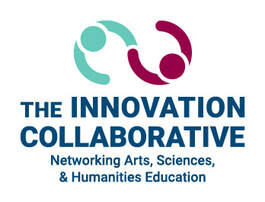A hallmark of the Collaborative is its higher-level thinking skills. These skills were developed by a team of experts from each of its disciplines (arts, sciences, and humanities) in concert with the Collaborative’s Thought Leaders. They have been studied in classroom settings and validated by research. They are continuously updated, based on the Collaborative’s research findings.
These skills are designed to help promote effective cognition from the earliest grades in order to enhance learning and, ultimately, workforce competency.
The Collaborative's research has shown that the use of these thinking skills and the Collaborative's STEAM lessons and strategies: 1) increased creative thinking 188% in elementary and 129% in secondary; and 2) significantly closed the achievement gap between whites and other ethnic groups.
These skills are designed to help promote effective cognition from the earliest grades in order to enhance learning and, ultimately, workforce competency.
The Collaborative's research has shown that the use of these thinking skills and the Collaborative's STEAM lessons and strategies: 1) increased creative thinking 188% in elementary and 129% in secondary; and 2) significantly closed the achievement gap between whites and other ethnic groups.
Effective Practices Higher Level Thinking Criteria
- Observing and asking questions – Students observe objects, phenomena, and experiences, and communicate questions that those observations raise.
- Defining/clarifying a problem – Students define a problem, then narrow the problem to feasible parameters.
- Acquiring and evaluating necessary knowledge – Students acquire knowledge that relates to their problem and evaluate its relevance and validity. This includes: 1) carrying out investigations in disciplinary and cross-disciplinary areas that address questions they have raised and 2) interpreting what they discovered using evidence.
- Generating ideas – Students generate a large number of original ideas concerning the problem, with an emphasis on out-of-the-box ideas.
- Changing perspectives – Students think about content and concepts in different ways or from different points of view.
- Abstracting – Students explore concepts and/or form generalizations from concrete experiences. They create the Big Idea.
- Transforming - Students modify and adapt ideas and content.
- Synthesizing – Students combine disparate ideas to form new conceptualizations. Bisociation is an important skill to use. In problem solving, this synthesis helps solve the problem.
- Comparing/contrasting – Students explore similarities and differences between ideas, experiences, or content.
- Visually analyzing – Students use visual analysis as an important part of their explorations and problem solving.
- This includes: 1) Scanning from top to bottom, observing carefully the image and all details; 2) making connections between aspects of the image; 3) determining what is happening in the image; 4) developing the meaning and intellectual message gained from the image.
- Evaluating ideas or statements - Students evaluate ideas or statements and then select the most appropriate ideas based upon criteria.
- Developing the solution - Students use their problem-solving experience to create their solution to the problem.
- Collaborating – Students collaborate with others to deepen the process of learning, thinking, understanding, and problem solving.
- This includes cooperating and sharing responsibilities to reach a common goal such as solving a problem and/or creating something.
- Determining Relevance to Own Lives - Students determine how the experience and what they learn from it is relevant to their own lives. Relevancy relates to making personal connections to such things as interests, culture, and prior knowledge.
- Persisting – Students persist when they experience failure or frustrations.
- This includes continuing to try, never giving up, enduring and adjusting course in the face of obstacles or difficulty.
- Creating – Students design, build, or invent something new based on what the student has learned or information that (s)he has been given. This can include models, concepts, or other works that help explain disciplinary concepts.
- Communicating – Students communicate through a variety of means what they have learned/discovered in this process. They are able to select the relevant information to explain their findings/products using discipline-specific argumentation.
- Responding – Students view others’ work or important concepts, knowing what to look for and how to make meaning. They see how the work or concepts connect to other subjects or to their own lives. They use criteria to evaluate these works or solutions.
